Azure Cognitive Services, now also known as Azure AI Services, is a set of cloud-based AI services provided by Microsoft that enables developers to integrate intelligent features into their applications without requiring machine learning expertise. These services allow applications to see, hear, speak, understand, and make decisions. With prebuilt APIs, you can easily add capabilities such as language understanding, speech recognition, computer vision, and decision-making to your solutions. Azure Cognitive Services helps businesses enhance customer experiences, automate content processing, and derive insights from various data types across apps and workflows.
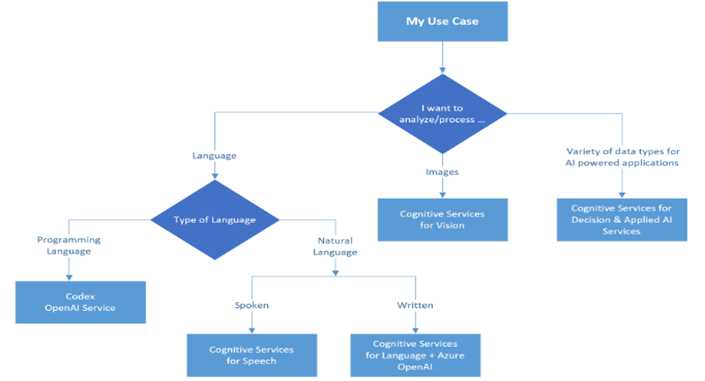
Azure Portal
But before that make sure that you have an account in Azure and have a subscription. If eligible, activate a free trial to explore Azure services.
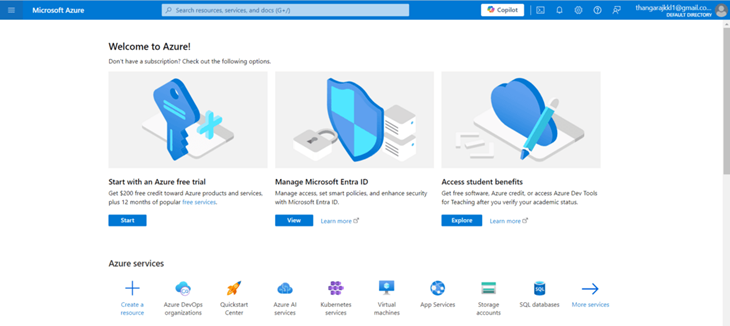
Types of Azure Cognitive Services:
Now that we have a clearer general idea of what these cognitive services are, it’s time to go into a little more detail about what they offer. Azure Cognitive Services of Microsoft Azure can be grouped into 5 categories that group APIs by macro functionality and are respectively:
- Vision: image processing to understand their content, algorithms for studying faces, documents, written texts and videos;
- Speech: speech analysis to perform operations, translations, voice identification;
- Language: intelligent comprehension of written texts, decoding emotions from text, translations, integrations with bots for chat conversations;
- Decision: monitors and statistics based on data, risk calculation;
- Search: integration of all Bing Search services
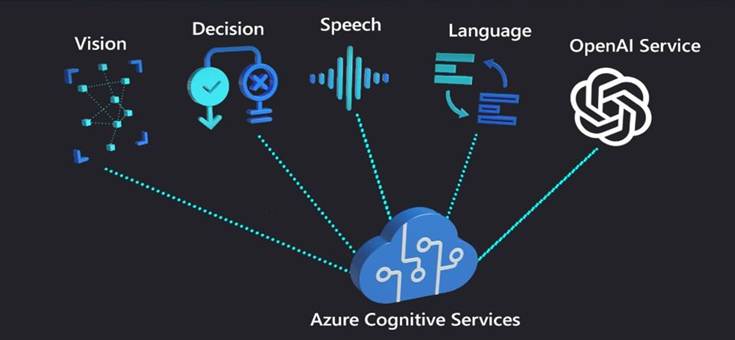
Azure Cognitive Services – Vision
Azure’s Vision services help apps understand and analyse visual content like images, videos, and GIFs. These tools can recognize objects, faces, and even read text from visuals.
Here are the main Vision services:
· Computer Vision: This service can describe what’s in an image, read text, tag objects, and more. You can upload an image or give a URL, and it will analyze it using AI.
· Custom Vision: Lets you build your own image classifier. You can train it to recognize specific objects or categories based on your own images. It can also detect faces and predict things like age, gender, or emotions.
· Form Recognizer: Automatically reads and extracts information from forms, invoices, receipts, and other documents. It pulls out key text, tables, and fields using AI.
· Video Indexer: Analyses videos to find people, text, speech, and scenes. It can understand the content, detect emotions, and make the video searchable by key moments.
· Face API: Detects and analyses human faces in images. It can recognize features like age, emotion, if someone is wearing glasses or a mask, and how their face is positioned.
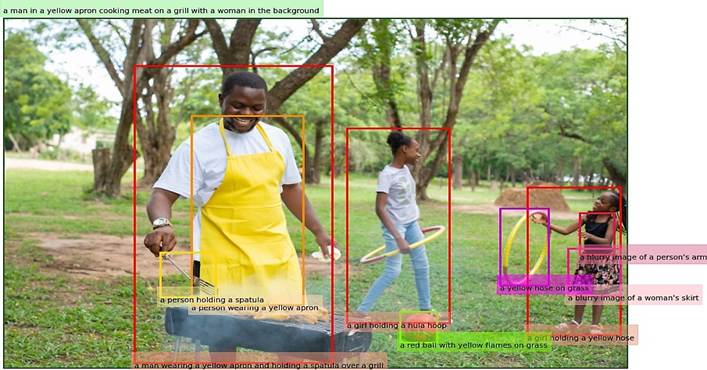
Azure Cognitive Services – Speech
Azure Speech services let your apps understand and work with spoken language. These tools can convert speech to text, text to speech, translate spoken language, and even recognize who is speaking.
Here are the main services:
· Speech to Text: Converts spoken audio into written text in over 85 languages and dialects. It can be customized for better accuracy using industry-specific vocabulary. You can use it to transcribe conversations, search through spoken content, or trigger actions based on spoken input.
· Text to Speech: Turns written text into natural-sounding speech. Choose from 250+ voices across 70+ languages and dialects. This is useful for chatbots, screen readers, and voice-based applications.
· Speech Translation: Translates spoken language into another language in real-time. Supports over 30 spoken languages and allows you to build voice translation apps that understand specific industry terms.
· Speaker Recognition: Identifies and verifies speakers using their unique voice. It’s useful for security, personalization, or multi-user systems where the app needs to know who is talking.
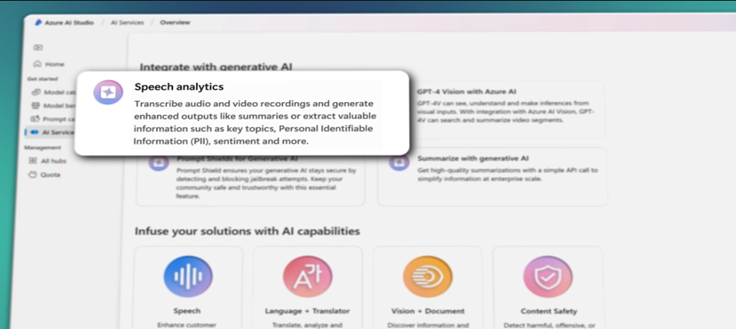
Azure Cognitive Services – Language
Azure Language services help apps understand, process, and translate text. These tools can read, interpret, and analyse human language to improve communication and accessibility.
Here are the main services:
· Immersive Reader: Makes reading easier for everyone by reading text aloud, translating it, and highlighting words. Great for education, accessibility, and language learning.
· QnA Maker: Creates a question-and-answer layer over your existing content like FAQs, manuals, or documents. It helps users find answers quickly using natural language.
· Language Understanding (LUIS): Helps apps and bots understand what users mean when they speak or type. It identifies the user’s intent and pulls out important details using machine learning.
· Text Analytics: Extracts information from text using AI. It can detect sentiment, key phrases, language, named entities (like names and places), and more.
· Translator: Translates text between different languages using advanced AI. You can use it with a simple API request in your apps to support multilingual communication.
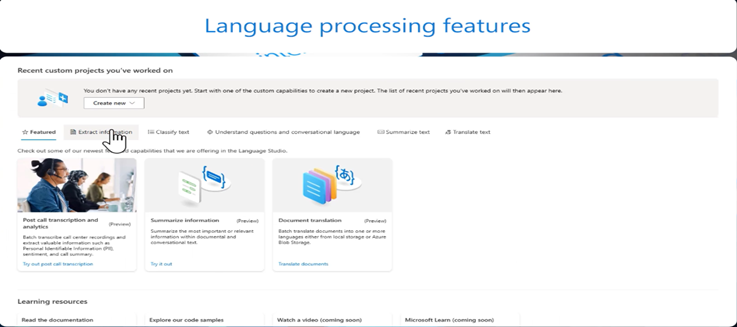
Azure Cognitive Services – Decision
Decision services analyze data and draw patterns to allow faster, more precise and efficient decisions to be made in different contexts.
These include:
· Anomaly Detector: You can quickly integrate time series anomaly detection capabilities into your apps to help users promptly identify any problems. Anomaly Detector accepts various types of data and chooses the most accurate anomaly detection method for your dataset.
· Azure Content Moderator: it’s an AI solution that allows you to manage highly inflammatory, dangerous, or otherwise inappropriate content. It includes an AI-based content moderation service that analyzes texts, images and video files, instantly adding quality alerts.
· Azure Personalizer: it’s a tool that helps your apps select the most appropriate content to display to your customers. You can use this service to determine which items to recommend to customers or where to place an advertisement.

Azure Cognitive Services – Search:
The last type of Cognitive Services offered by Azure is related to the way in which we search for information online. Even if Bing is not as popular as Google, the Microsoft search engine continues to defend itself using powerful algorithms based on artificial intelligence, capable of searching, comparing results and selecting only those that are relevant to your requests.
· Bing News Search: provides ad-free news search results from a query on Bing News. It can also be used to examine trending topics on the internet.
· Bing Web Search: provides location-based, ad-free, and secure results. These can include images, videos, web pages, or news.
· Bing Visual Search: helps the user identify images and similar products, identify web sources and acquire knowledge from images.
· Bing Video Search: this is a video search engine that provides ad-free video search results from Bing Videos and also offers the identification of video topics and trends.
· Bing Entity Search: This API returns mostly local results with named entities or classifications such as famous people, hotels, restaurants, and more.

What are the benefits?
· Easy to Use
You don’t need to be an expert in AI or machine learning. With ready-to-use AI tools and simple API calls, you can add smart features to your apps quickly.
· Works on All Devices
Azure supports all major platforms like Windows, iOS, and Android. Developers can use any programming language (like Python, C#, Java, or Node.js) to build apps.
· Better User Experience
Tools like Personalizer and Content Moderator help create more engaging apps and keep out offensive or unwanted content.
· Get Deeper Insights Fast
Vision tools (like face recognition, form reading, and handwriting detection) help you understand more from images, videos, and documents.
· Boost Productivity
Speech and language tools help you work faster by turning speech into text, analyzing conversations, and understanding natural language.
· Strong Data Security
Azure follows strict security standards (over 70 certifications) and lets you control or delete your data when needed.
Examples and Use Cases:
· To protect its millions of users against fraud attempts, the Uber company has implemented Azure Face API, which allows the service’s app to verify the driver’s identity. Passengers can be sure that their driver is the real owner of the account.
· The automotive giant Volkswagen manages a large volume of content that must be translated every day into more than 40 different languages. This requires the translation of billions of words with short response times, and the excellent learning capabilities, flexibility and high scalability of Azure have allowed the German multinational to implement a precise translation for their software in almost real time and in a convenient way.
· The international aircraft manufacturing company Airbus uses the capabilities of the Anomaly Detector in containers to monitor the status of its aircraft and solve problems in advance. The Anomaly Detector is also used to facilitate pilot training through voice-enabled chatbots.
